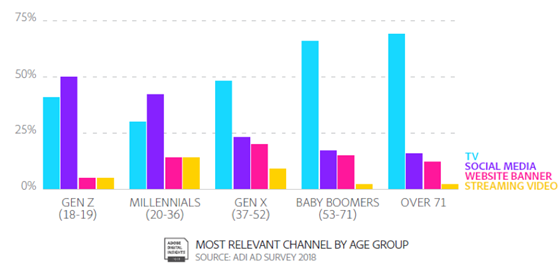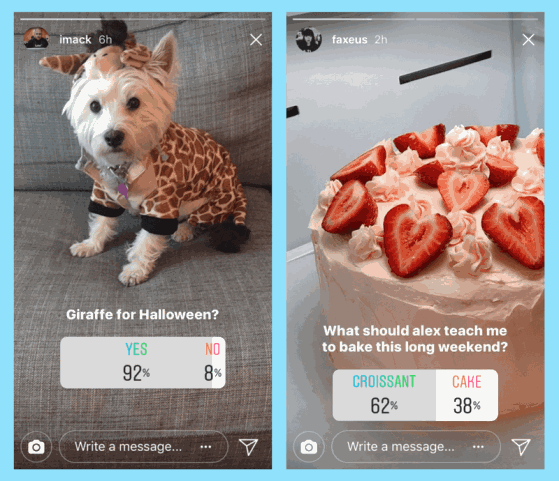By Farnaz Zanjani, Digital Strategy Assistant, Manatt Digital
It’s no secret that millennials and Gen Z consumers love their screens. These younger generations are mobile natives, spending much of their time scrolling through social media. The more people spend time on social media, the more content is created, and the more time people spend. And the content created and consumed the most is video. This is the virtuous cycle that has contributed to the growth of consumption on social media.
With growing demand for video by both consumers and advertisers, social media platforms have quickly turned into video distribution platforms, many optimized for mobile.
Such as with the establishment of Facebook Watch, Instagram’s IGTV, YouTube TV and even Snapchat Shows, consumers are turning to their smartphones to feed their appetite for video. In fact, 54% of video time per day is spent on social apps—25% of which is coming from YouTube and 29% from other social platforms. According to this study by VidMob, that’s five times more than is spent watching linear TV and two times more than is spent watching streaming services.
As a result, advertisers are increasing their ad spend on social media. In the United States, social media ad spend increased from $10.8 billion in 2015 to $19.3 billion in 2018. Not only are advertisers spending more on social ads, they’re also making them more personal to their target audiences. Younger consumers are more likely to respond better to an ad that is more relevant to them as individuals. With social video, content is more personalized, which makes it easier for advertisers to target ads to appropriate audiences.
 Source: CMO
Source: CMO
There’s something unique about the type of content consumers are watching on social. This may be because social media content is, in part, meant to be user-generated. Therefore, users (including influencers/content creators and celebrities) are able to share their lives with the world via video. According to a study conducted by Tubular, some say the key to social media’s success is its ability to transport viewers into another person’s life, world and experiences. When a person shares intimate moments of his or her life, it’s easy for viewers to find a shared experience in that person’s world that they can closely identify with.
In Q1 2018, room tour videos performed as the highest-trending type of video content on social media. Room tours are behind-the-scenes videos, where creators give you a glimpse into their homes, their bedrooms, their fridges, their closets or any spaces of theirs that offer a personal look into their lives. Last year, there were 637 million views of room tour content on YouTube. This shift in the type of content today’s consumers are engaging with is based on their interest in content that is more relatable and relevant to them.
Interactive features—such as Instagram’s “Stories,” polls and questions sticker—allow consumers to become even more engaged with their favorite creators and celebrities by interacting with them in real time. “Stories” is the content format for photos and short-form video that disappear after 24 hours. The video format was pioneered by Snapchat and has since been implemented into various platforms across the social media ecosystem, including Instagram and Facebook. More than 70% of Instagram and Snapchat users watch Stories on both platforms daily. Not only are Stories easy to click through and watch, but they’re also vertically oriented—a natural way to engage consumers glued to their mobile devices.
Instagram’s aforementioned polls and questions are two separate features that are integrated into its Stories platform. With polls, users can provide two options and have their audience decide—do they like this? Or do they like that? More recently, Instagram released the questions sticker for users to ask brands and influencers questions to which they can respond almost immediately. Instagram has stated that the questions sticker was designed for people to start conversations and get closer to their friends and followers. However, Instagram isn’t the only social platform making its video more interactive. Facebook recently acqui-hired Vidpresso, which offers content publishers and providers a technology to make online video more interactive with on-screen polls, comments and other social media-integrated elements. Facebook has previously experimented with interactive video, such as its Watch Party tool that allows groups to watch videos simultaneously. It has since released a new set of interactive video features that include quizzes, polls and gamification elements.

 While influencer content and user-generated content have been more core to the social media experience, traditional media and publishing companies are now creating content authentic to these platforms and are adopting social media as a strategic distribution channel. Viacom brought short-form versions of some its MTV shows to Snapchat, such as Cribs and Girl Code, in an agreement to renew and extend its partnership with the social platform. Conde Nast’s Vogue has a widely popular series on its YouTube channel, 73 Questions, which features different celebrities answering 73 impromptu questions. Its most recent video, 73 Questions with Lady Gaga, has amassed 4 million views in three weeks.
While influencer content and user-generated content have been more core to the social media experience, traditional media and publishing companies are now creating content authentic to these platforms and are adopting social media as a strategic distribution channel. Viacom brought short-form versions of some its MTV shows to Snapchat, such as Cribs and Girl Code, in an agreement to renew and extend its partnership with the social platform. Conde Nast’s Vogue has a widely popular series on its YouTube channel, 73 Questions, which features different celebrities answering 73 impromptu questions. Its most recent video, 73 Questions with Lady Gaga, has amassed 4 million views in three weeks.
Publishers are also leveraging Instagram’s long-form video platform, IGTV, to repurpose content from its other social platforms. Some publishers even have Facebook Watch exclusive shows, including CNN, Mic, Univision, Fox News and ATTN. CNN created an entirely new show featuring Anderson Cooper, called Anderson Cooper Full Circle, which is shot vertically for mobile device viewing.
The major players in social media have all launched their own long-form, episodic video platforms that mimic the viewing habits of traditional television. Just last week, Snapchat announced a new slate of original shows, formalizing the formation of the Snap Originals brand. The shows will be a variety of episodic scripted and docuseries shows that will require users to return to the app to watch the next episode.
While it’s evident that there has definitely been a shift in the amount of video that consumers watch on social media, that’s not to say social video is taking over (or that it’ll even be the primary platform for digital video). Social media video is heavily dependent on user-generated content, which is what makes video viewing on those platforms unique and inherently different from that of linear TV content. This shift in video consumption isn’t eliminating traditional TV; rather, it’s paving the way for new and unique digital video viewing experiences that will coexist with a variety of other viewing experiences.